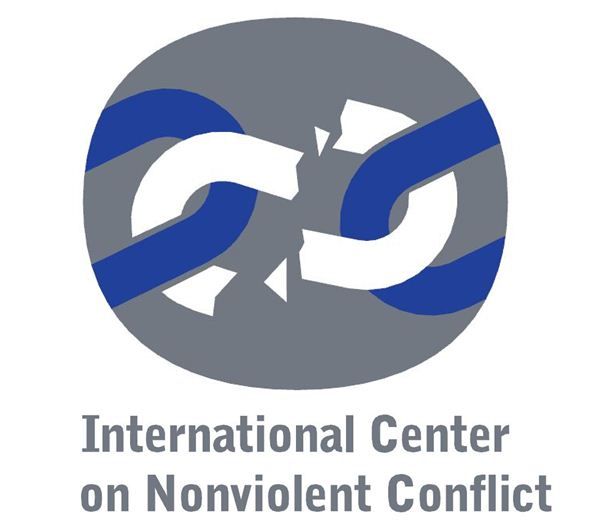You are here
Iran
Amnesty issued this early condemnation of regime violence against 'verified video footage', eyewitness reports and other information on the 'excessive and often lethal force' used to crush largely peaceful protests in over 100 cities. Amnesty also notes the role of security forces in seizing the bodies of the dead, or compelling relatives to bury protesters without an autopsy, as well as the internet shutdown imposed by the regime.
See also: Human Rights Watch, 'Iran: No Justice for Bloody Clampdown', 25 February, 2020, pp. 18.
https://www.hrw.org/news/2020/02/25/iran-no-justice-bloody-crackdown
This lengthy report, written after the mass demonstrations had been crushed, provides information about protests, and the authorities' response, in different provinces. It also indicates the difficulty of getting precise figures for deaths (estimated at a minimum of 304) and imprisonments (about 7,000 according to one member of parliament), given the closing down of the internet and regime threats to families.
For the protests leading to the overthrow of the Shah, see pp. 496-537. See also , Mass Protests in the Iranian Revolution, 1977-79 In Roberts; Garton Ash, Civil Resistance and Power Politics: The Experience of Non-violent Action from Gandhi to the Present (A. 1.b. Strategic Theory, Dynamics, Methods and Movements)Oxford, Oxford University Press, 2009, pp. 162-178 .
Explores both attempts at legal reform and those reforms achieved in Islamic countries (Palestine, Yemen, Iran and Egypt) and problems of implementing reform, for example the domestic violence law in Ghana.
Albert also comments briefly on the Iranian Revolution to illustrate the dynamics of power relationships (pp. 29-36) in his booklet: Albert, David H., People Power: Applying Nonviolence Theory Philadelphia PA, New Society Publishers, , 1985, pp. 64 .
Chapters 5-7 focus on the demonstrations.
Report on how small group protests in Iran's second largest city, Mashhad, in December 2017 rapidly grew into major demonstrations reported in most provinces across Iran, with crowds often demanding an end to the dominance of senior clerics and the Revolutionary Guard. Beauchamp notes that protests on specifically economic issues, the responsibility of the parliamentary leader President Rouhani, could be acceptable to the religious leaders, but a direct challenge to their own dominance was not.
This wide-ranging collection analyzes the status and progress of women both in a national context and collectively on a global scale, as a powerful social force in a rapidly evolving world. The countries studied―China, India, Indonesia, Iran, Egypt, Cameroon, South Africa, Italy, France, Brazil, Belize, Mexico, and the United States―represent a cross-section of economic conditions, cultural and religious traditions, political realities, and social contexts that shape women’s lives, challenges, and opportunities. Psychological and human rights perspectives highlight worldwide goals for equality and empowerment, with implications for today’s girls as they become the next generation of women. Women’s lived experience is compared and contrasted in such critical areas as: home and work; physical, medical, and psychological issues; safety and violence; sexual and reproductive concerns; political participation and status under the law; impact of technology and globalism; country-specific topics.
Mostly an analysis of broader Iranian history, but discusses June 2009 protests and their aftermath.
Combines statistical analysis with case studies of unarmed resistance to argue that since 1900 nonviolent resistance campaigns have been strategically more effective than violent campaigns. Also analyses factors that promote success or failure of nonviolent campaigns. An earlier version of their overall argument was published as Chenoweth, Erica ; Stephan, Maria J., Why Civil Resistance Works: The Strategic Logic of Nonviolent Conflict International Security, 2008, pp. 7-44 , including useful case studies of East Timor, the Philippines and Burma 1988-1990.
Critical assessment of today's 'military industrial complex' and also the role of drones in the US wars in Afghanistan and in targeting 'terrorists'. Cockburn documents the technological failings of drones, often unable to distinguish targeted individuals from others nearby, and the 'trigger-happy' attitudes of some soldiers using them. Both led to numerous mistaken deaths.
See also: Frew, Joanna, 'Drone Wars: the next generation', Peace News , 2618-2619, June-July 2018, p. 4.
Frew summarizes a new report, issued by Drone Wars UK, on development and use of armed drones by a 'second generation' of nine states (including China, Iran and Turkey) and several non-state actors developing and using armed drones. (The first group was the US, UK and Israel.) The report also estimates that a further 11 states would soon be deploying drones, and that China was increasing export of them. Frew stresses the urgent need for international controls, and queries whether existing controls on exports (already being undermined in the US) were adequate.
Articles by:
- Afshan, Ali and Graham Underwood, ‘The Green Wave;
- Milani, Abbas, ‘Cracks in the Regime’ (focusing on role of Islamic Revolutionary Guard corps and dissent in Ministry of Intelligence’;
- Bouroumand, Ladan, ‘Civil Society’s Choice’ (stressing human rights and referring back to her article Bourourmand, Ladan , The Untold Story of the Fight for Human Rights Journal of Democracy, 2007, pp. 64-79 ).
The authors start from the 2017-18 protests, significant for their 'geographical scope and range of grievances', but emphasize that local unrest linked to a range of economic grievances has been frequent - especially since the end of the Iran-Iraq war in 1988 - and largely ignored by western media. They consider why the goal of social justice, central to 1979, has not been achieved and the change in policy after 1988 towards 'commercial priorities and top-down policy making'.
chapter 7.
Covers a range of issues, including Foucault’s interpretation of power and resistance, in accessible form (and also includes interesting discussion on the 1977-79 Iranian Revolution). See also Foucault. M., ‘Truth and Power’ in Rabinow, ed., The Foucault Reader: An Introduction to Foucault’s Thought, Harmondsworth, Penguin, 1991. For a brief survey of Foucault’s evolving thought see Bleiker, Popular Dissent, Human Agency and Global Politics (A. 1.a.ii. Theories of Civil Disobedience, Power and Revolution) , pp. 530-73.
Golkar examiines the November 2019 upsurge of protests, comparing it with 2017-18. He also analyzes the regime responses, its investment in new technologies for its security forces, but also attempts in 2020 to improve welfare for the poor.
Anthology exploring the nature of the movement, including expert and participant analyses, manifestos, communiques, interviews and debates. A number of the presentations, including that by co-editor Danny Postel and Charles Kurzman’s ‘Cultural Jiu-Jitsu’ can be viewed on YouTube channel ‘Iran: Politics of Resistance’.
Following the rise of tensions between the US and Iran during 2019 and the increased of awareness within the public of the catastrophic consequences of a nuclear attack, this article critically discuss the potential for movements to advocate a ‘No First Use’ policy in the US, and the potential embedded within the Treaty for the Prohibition of Nuclear Weapons.
By demolishing the myth that feminism originated in the West, Kumari Jayawardena presents feminism as it originated in the Third World, erupting from the specific struggles of women fighting against colonial power, for education or the vote, for safety, and against poverty and inequality. Gives particular attention to Afghanistan, China, Egypt, India, Indonesia, Iran, Japan, Korea, the Philippines, Sri Lanka, Turkey, and Vietnam.
To look at a brief extract of the book see also https://www.versobooks.com/blogs/4018-feminism-and-nationalism-in-the-third-world
Abortion is a hotly debated topic among Muslim communities. In this paper, the author examines how both anti-abortion and abortion rights groups deploy ideas about Islam. She analised the language used by these groups when describing Muslim communities and Muslim views and found that a majority of them did not include arguments from both sides. Almost all the Anti-Abortion Websites included generalizations about the Muslim community, and also used the conservative elements in Islamic Religion to persuade more Muslims to join their stance on abortion.
Celebrated analysis by distinguished Polish journalist of later years of Shah’s regime and meditation on power, the role of fear and the nature of revolution.
Covers Lebanon since the mass movement in response to Hariri’s assassination, covering the role of Hizbollah and other political groupings.
Contends that the revolution was truly unpredictable by critiquing five sets of retrospective ‘explanations’. Includes essay on available source material.
An informative and detailed account of how the proposal for an Arms Trade Treaty to set international standards and controls upon the sale of arms, promoted in the 1990s by NGOs (such as Oxfam and Amnesty International) and by prominent individuals, for example Nobel Peace laureates, gained governmental support. The goal was not to stop all arms exports, but the more limited one of setting international standards for controlling sale of arms to strengthen national rules and to prevent weapons from intensifying conflicts or worsening human rights abuses. The Treaty was agreed at the UN General Assembly in April 2013 by 157 states, including the US under President Obama.
See also: Campaign Against the Arms Trade, 'Issues - Arms Trade Treaty'
https://www.caat.org.uk/issues/att
CAAT notes that the Arms Trade Treaty came into force in December 2014 when ratified by 50 states (including the UK), but explains their scepticism about the concept of a 'responsible' arms trade. CAAT claims the UK approves licenses which contravene the approved guidelines. and it should stop promoting arms sales A number of other sources sceptical about the Treaty are listed.
See also: 'Canada, ‘Canada joins the Arms Trade Treaty while still selling arms to Saudi Arabia’, Oxfam, 16 May 2019
Oxfam comments that whilst Canadian eventual accession to the Treaty is a major victory for civil society, the government has not made moves to cancel its $15 billion arms deal with Saudi Arabia, despite the Saudi record on human rights (denounced by the Trudeau government) and the Saudi role in the war in Yemen.
See also: Pecquet, Julian, ‘UN Approval of Arms Trade Treaty sets up Obama, Senate Showdown’, The Hill, 2 April 2013
Commentary on the domestic political context of Obama’s decision to back the Arms Trade Treaty, opposed by 53 Senators and the National Rifle Association. In the light of domestic opposition the Obama Administration had delayed support for the UN treaty in the run-up to the November 2012 election. Pecquet also notes that the treaty passed with 154 votes; three countries opposed – North Korea, Syria and Iran – and 23 abstained.
The author, an Iranian journalist living abroad, provides lively analysis of the Green Movement and current Iranian politics. See also: Majd, Hooman , Think Again: Iran’s Green Movement. It’s a Civil Rights Movement, not a Revolution Washington DC, Foreign Policy, , 2010 , online at http://foreignpolicy.com/2010/01/06/think-again-irans-green-movement/.
contains an overview by Charles Kurzman. ‘The Arab Spring Uncoiled’, and articles on Egypt, Iran, and Syria.
Interesting survey of Iraian public opinion after the 2017-18 protests. The survey covers a wide range of economic and political issues, including Iran's foreign policy. The findings show that many see Iran's economy as worsening, but blame inefficiency and corruption more than international sanctions. The survey also indicates that a majority of the respondents disagree with criticism of the regime and or of strictness in enforcing Islamic laws, and also support the police response to protests. However, a majority does not endorse harsh punishment for peaceful protesters. For a summary of the findings see: https://drum.lib.umd.edu/handle/1903/21088
An analysis of the theocratic regime installed in 1979 and the problems facing the country, including corruption and cronyism, deep economic inequality and a brain drain of professionals. The author discusses the potential of the Green Revolution and its suppression, considers whether there is any scope to reform the regime from within, and concludes that the best hope is another revolution.
See also: Boroumand, Ladan, 'Iran's Exclusionary Republic', Journal of Democracy, vol. 29 no. 2. (April 2018), pp. 406.
This review of the 2016 book Democracy in Iran (see below) begins by commenting on the mass demonstrations that broke out in late December 2017 across 72 cities, calling for regime change, and how they were suppressed (48 killed and 4,792 arrests). Boroumand asks how 'recurrent explosions of popular anger in the Islamic Republic can be explained, and how the most recent protests related to the strong majority vote for the moderate President Rouhani six months earlier. She then turns to the book as a helpful analysis of developments since 1979, when Ayatollah Khomeini came to power.
Detailed analysis by an investigative US reporter of attempts by the George W. Bush Administration and Israel to prove that Iran was developing nuclear weapons. Porter scrutinizes the evidence cited and throws doubt on much of it.
This paper describes the Middle East Nuclear Weapons Free Zone’s proposal, originally advanced by Iran and Egypt in 1974, as well as the extension of the concept in 1990 to include all weapons of mass destruction.
Are revolutions made or do they come? This question is at the heart of revolution theory and has received plentiful attention from scholars. In this paper I suggest that adherence to this traditional dichotomy may not be the most useful to approach the study of revolutions. Therefore, I argue that theorists of revolutions are well advised to examine the role of the strategic decisions made by revolutionaries in their struggles against the state. Drawing empirically on the nonviolent revolution of Iran in 1977-79, I show that the strategic decisions made by the opposition movement not only allowed them to capitalize on a political opportunity, but that their strategic choices in fact helped bring that opportunity about in the first place.
An early book on the second wave of popular rebellions in North Africa and the Middle East, with chapters on Algeria, Sudan, Lebanon, Iran and Iraq, bringing out similarities and differences between the movements.
Skopcol is well known for her theoretical contribution to the theory of revolution, stressing the role of the state (States and Social Revolutions: A Comparative Analysis of France, Russia and China, Cambridge University Press, 1979), here she applies her framework to the Iranian Revolution of 1977-79.
US diplomat describes and assesses the evolution of protest.
Highlights important challenges that women face in the Kurdish part of Syria; Tunisia; Morocco; Egypt; and the Persian Gulf in the aftermath of the Arab Spring.
A Special Investigation by Matthew Taylor and Jonathan Watts on the role of fossil fuel companies in promoting the climate crisis. Includes list of the 'top five global polluters': Saudi Aramco, Saudi Arabia; Chevron, US; Gazprom, Russia; ExxonMobil, US; National Iranian Oil Co.
A Guide to Civil Resistance
Volume One
Volume Two
 The online version of Vol. 1 of the bibliography was made possible due to the generous support of the International Center on Nonviolent Conflict (ICNC). ICNC is an independent, non-profit educational foundation that develops and encourages the study and use of civilian-based, nonmilitary strategies aimed at establishing and defending human rights, democratic self-rule and justice worldwide.
The online version of Vol. 1 of the bibliography was made possible due to the generous support of the International Center on Nonviolent Conflict (ICNC). ICNC is an independent, non-profit educational foundation that develops and encourages the study and use of civilian-based, nonmilitary strategies aimed at establishing and defending human rights, democratic self-rule and justice worldwide.
For more information about ICNC, please see their website.
 The online version of Vol. 2 of the bibliography was made possible due to the generous support of The Network for Social Change. The Network for Social Change is a group of individuals providing funding for progressive social change, particularly in the areas of justice, peace and the environment.
The online version of Vol. 2 of the bibliography was made possible due to the generous support of The Network for Social Change. The Network for Social Change is a group of individuals providing funding for progressive social change, particularly in the areas of justice, peace and the environment.
For more information about The Network for Social Change, please visit their website.










 esistance.info
esistance.info

